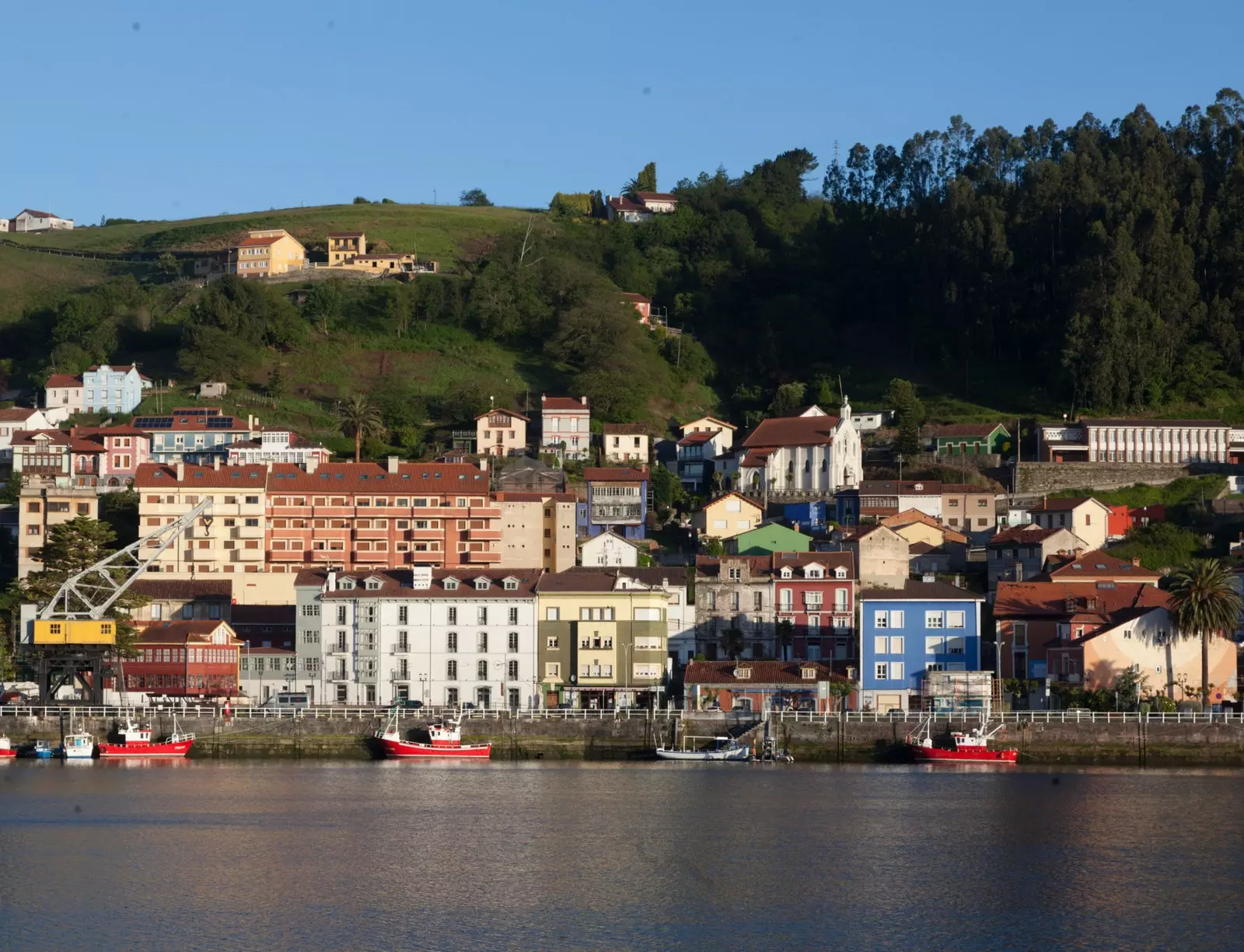
San Esteban de Pravia, more than an Asturian fishing village.
Witness to industrial past of San Esteban de Pravia are the imposing (and recently restored) cranes that dot the left bank of the Nalón, the estuary to which this peculiar town of the Asturian west.
There are Indian houses, there are exotic palm trees, there are hydrangeas of impossible colors, there are good restaurants with traditional cuisine and even a port... but you perceive something in its (pseudo) seafaring environment that tells you no, that You are not facing the typical picture of an Asturian coastal town. Don't worry, that's exactly why, because it's not. San Esteban de Pravia is exceptional.
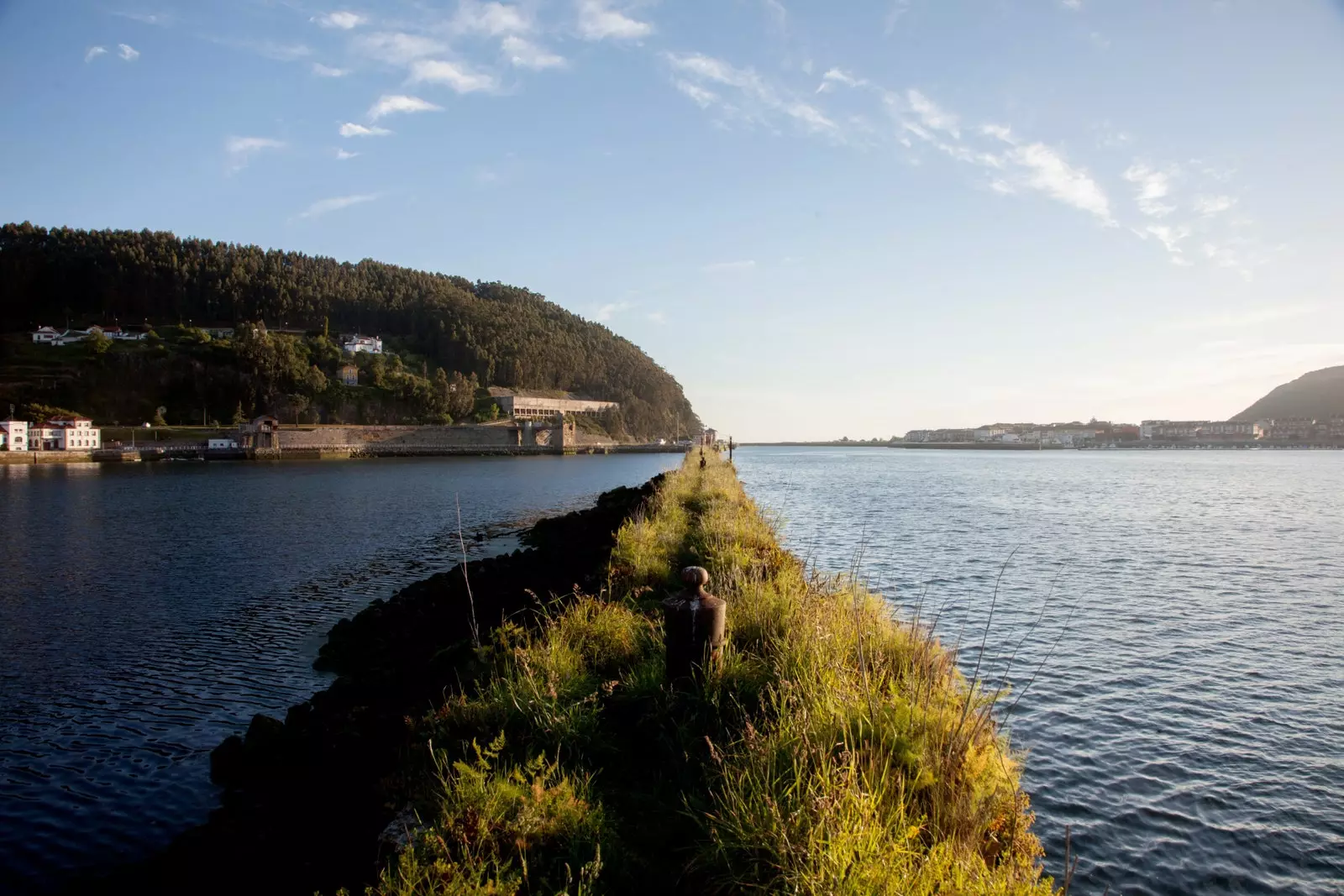
Mouth of the Nalón, in Asturias.
THE HISTORY
It is the coal port of San Esteban de Pravia, declared of historical-industrial interest, an open-air museum. Let us remember that it was the first and the only one in our country in which coal was loaded directly onto ships. You just have to walk around the town to come across the remains of what was one of the most important coal mining centers in the north of the peninsula. Proof of this are the aforementioned cranes, the loading docks (which you will pass under), and the railway station: a narrow gauge line was used to transport the Asturian black rock from the mining basins to the coast, from where it would depart to be exploited by the Basque iron and steel industry.
Also worth a visit Board of Works of the Port, the building of the Maritime Customs and the House of Baths, which later became the port police station.
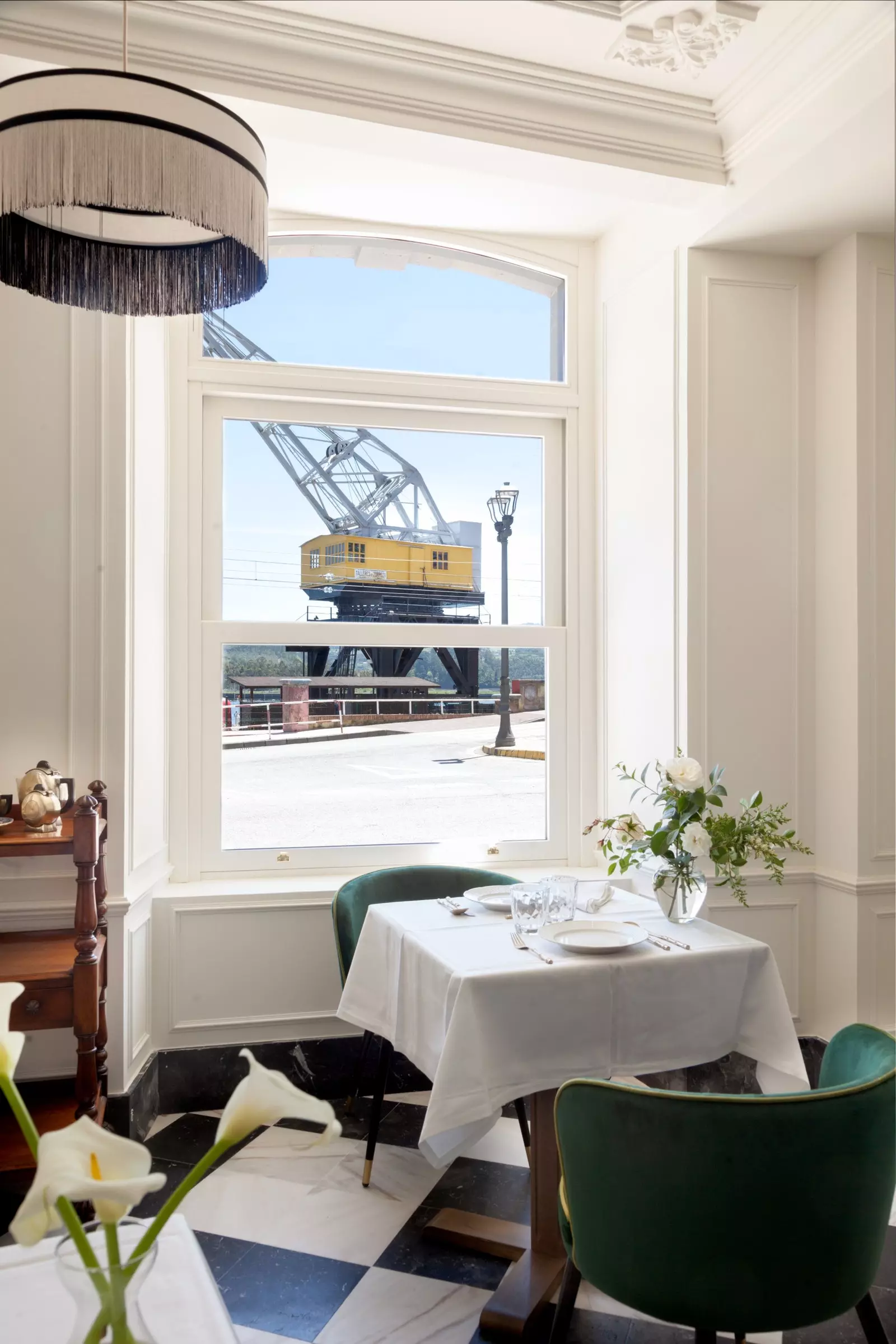
Views from the restaurant of the Gran Hotel Brillante.
THE HOTEL
tells us Fernando Artime, owner of the new Gran Hotel Brillante, that poets like Rubén Darío and painters such as Joaquín Sorolla or Mariano Fortuny they spent their days within the walls of the former Brillante boarding house in San Esteban de Pravia. Which is why The Grand Suite of the newly renovated hotel, which occupies a historic building from the early 20th century, is named after the famous Nicaraguan writer in his honor. A story that brings sensitivity to our stay and makes our imagination travel at a stroke to that golden age in which the town received frequent visits from the intellectuals of the time, who found their place in the world among sailors and residents of the town (Rafael Altamira lived in a house next to the port).
Has been the interior designer Beatriz Silveira the one in charge of restoring splendor to this Asturian hotel with 14 rooms and eight private residences with details as sophisticated as custom-made furniture, headboards lined with fabrics from the English house Designers Guild, marble from Almería, Alicante and Portugal, Portuguese taps and Lamps by Otherlamps model Calabazas de Pravia designed by Paloma Eguilior and Matilde Llado.
In its restaurant, with views of the estuary and one of the port's cranes, a product cuisine is practiced in which the flavors of yesteryear (ask for the salad and the stewed cheeks) are accompanied by for a classic and impeccable service.
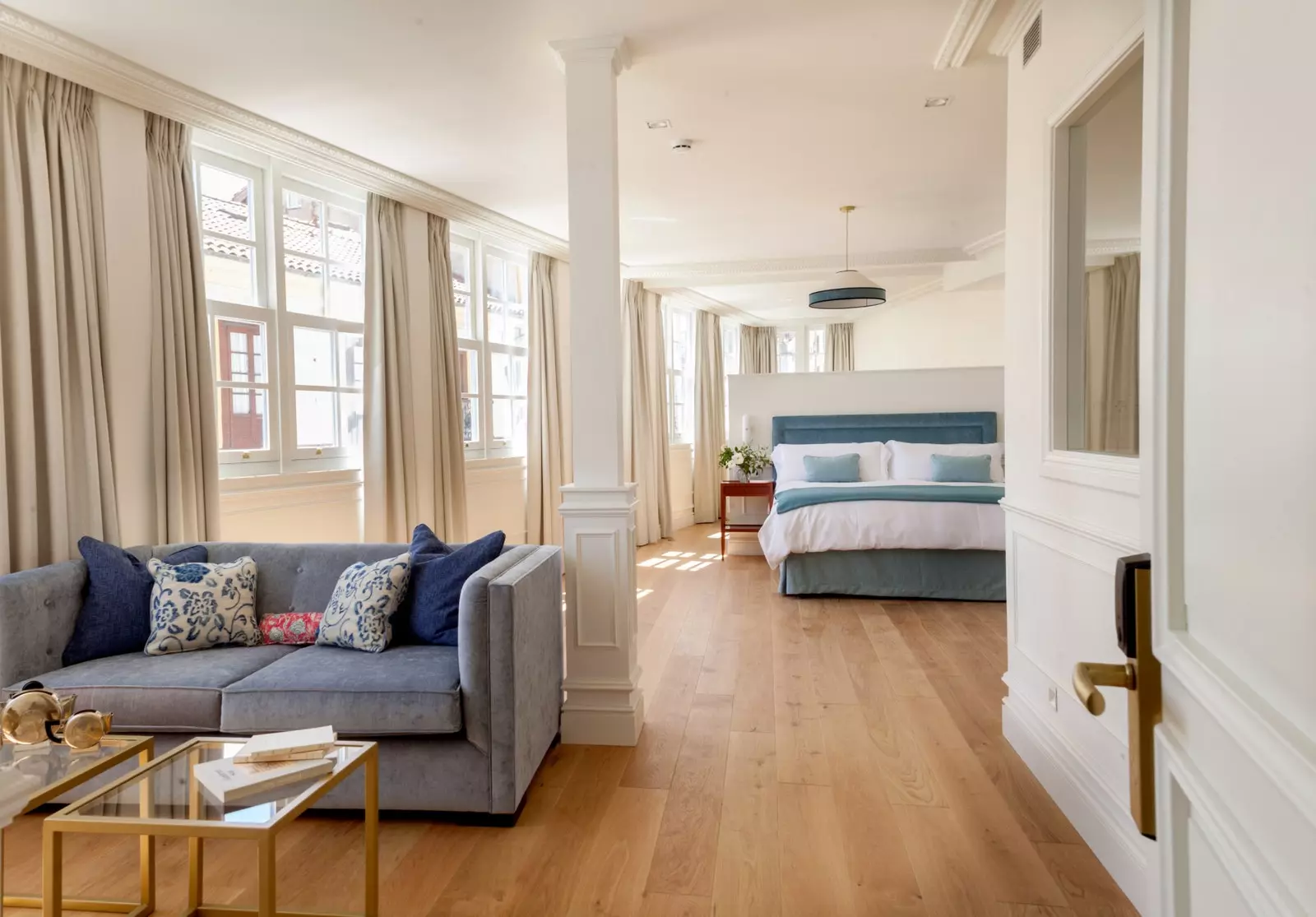
Great Rubén Darío Suite, in the Great Brilliant Hotel.
ROUTE OF THE VIEWPOINTS
At the end of the river walk, there where the dam rises and the estuary kisses the sea, begins the fun part of the Muros de Nalón Coastal Path, which connects San Esteban with Aguilar beach and is known as the Route of the viewpoints. And we say fun because you will have to climb no more and no less than 420 steps to reach the hermitage of the Holy Spirit and its viewpoint, the first of the journey. The rest will appear in a staggered manner along this path of just over six kilometers that runs between honeysuckle, laurels, chestnut trees and eucalyptus on top of the cliff.
One piece of advice, if you are tempted to go down to one of the the deserted beaches (some nudists) that you will see from the viewpoints, keep in mind that in many cases access is very complicated. And we are not overdoing it by using the adverb. To give an example, for descend to the beaches of Atalaya and Cazonera you will almost have to 'rappel' holding on to a rope down a steep path. And without safety harness!
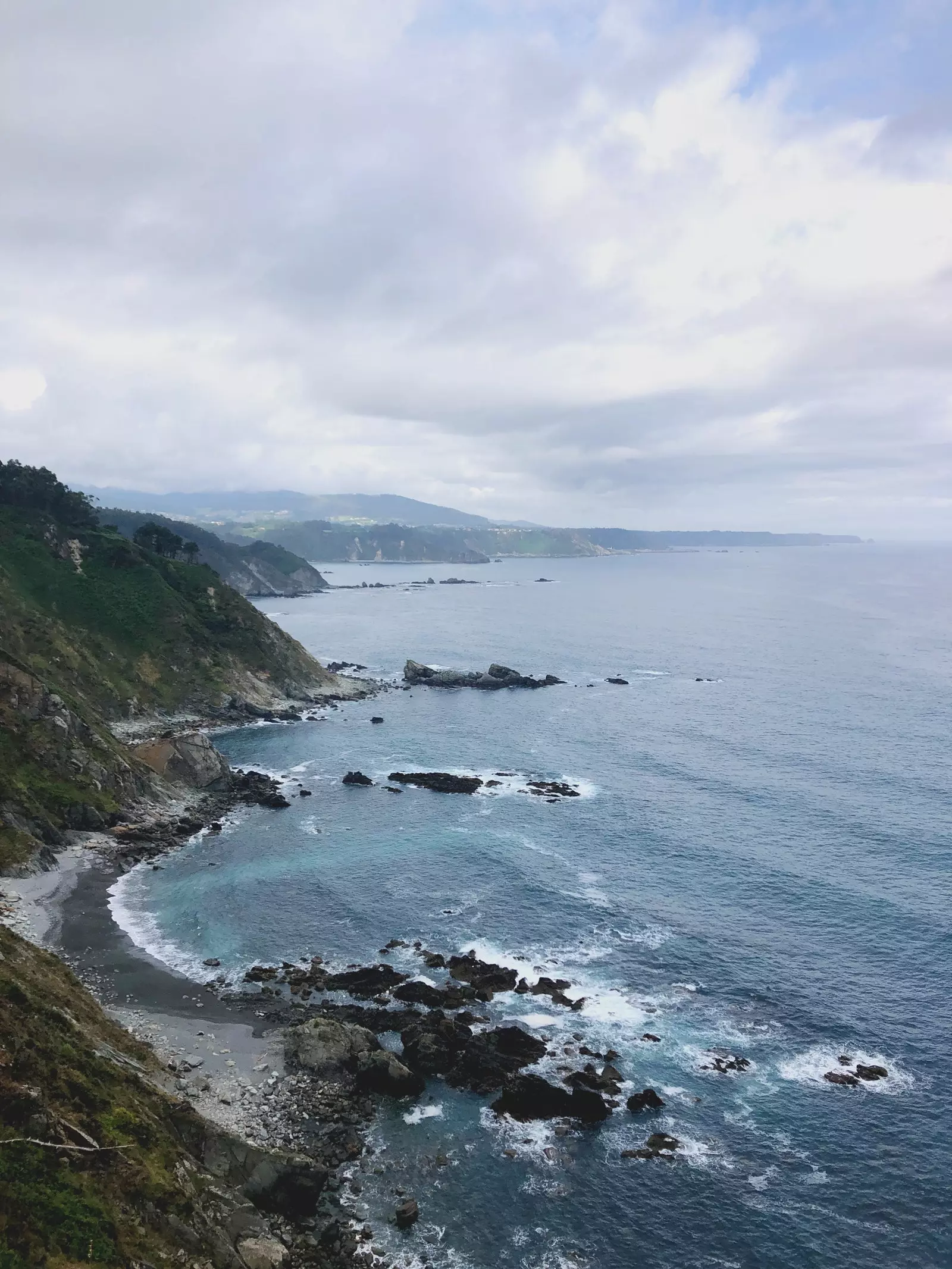
Views from the viewpoint route.
THE NEARBY BEACH
At the mouth of the Nalón, on the other side of the estuary, we find Los Quebrantos, the huge beach of San Juan de la Arena which, together with the neighboring Playón de Bayas, forms the longest sandy area in the Principality. With dark and rocky sand, strong waves and protected by a dune system, it is one of the favorite playgrounds for surfers (in fact there are several surf schools stationed in it).
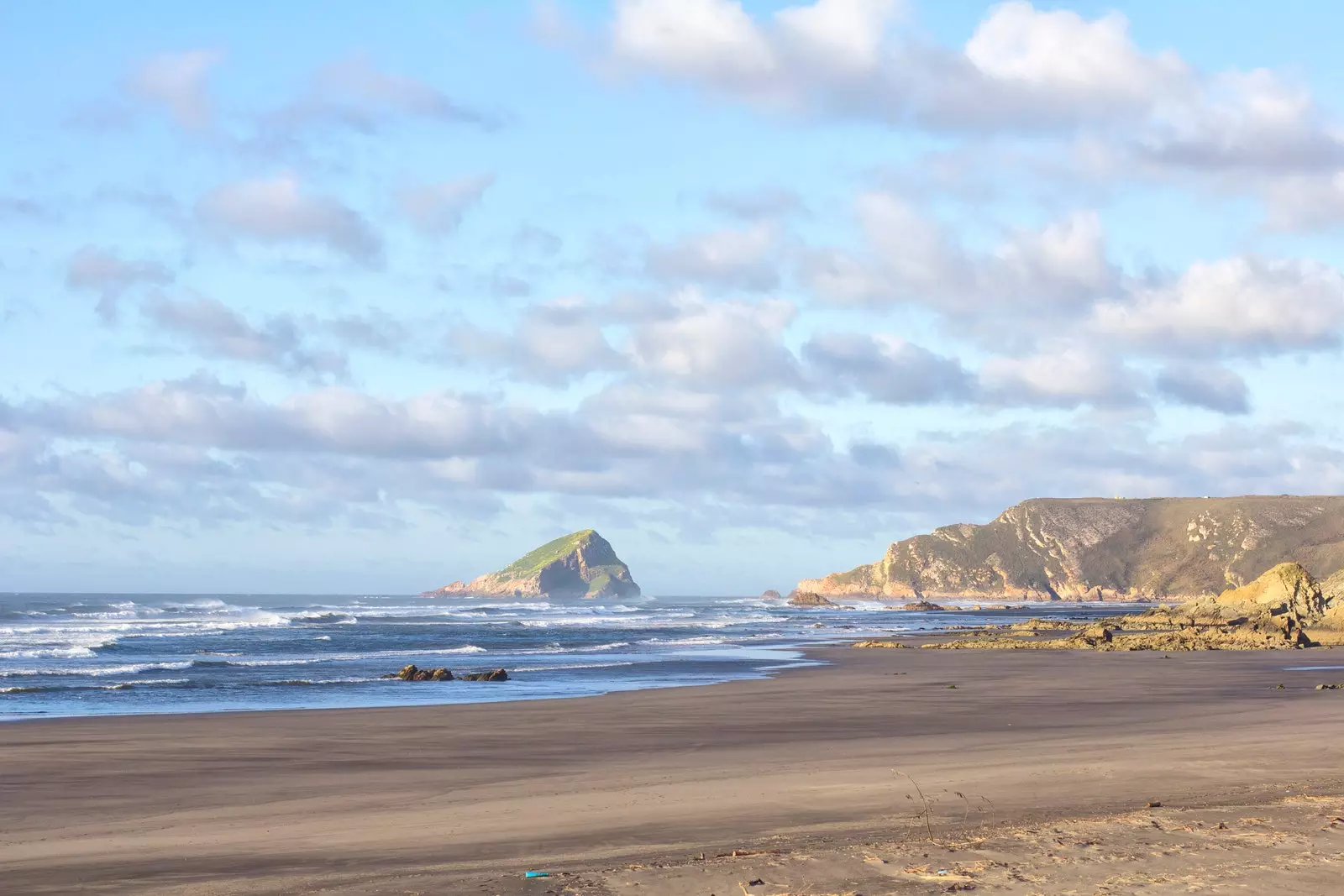
Los Quebrantos beach, in San Juan de la Arena.
For many It is the dream beach more than for its breadth, for the manicured lawn area that surrounds it, where there are also two beach bars where you can cool off during hot days. If you go up the stairs of the viewpoint of Punta del Pozaco, used to access the other side of the sandbank when there is high tide, you will get a amazing panorama of this little piece of Asturian coast.
